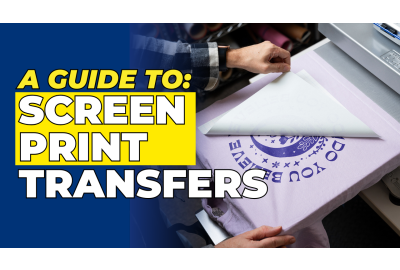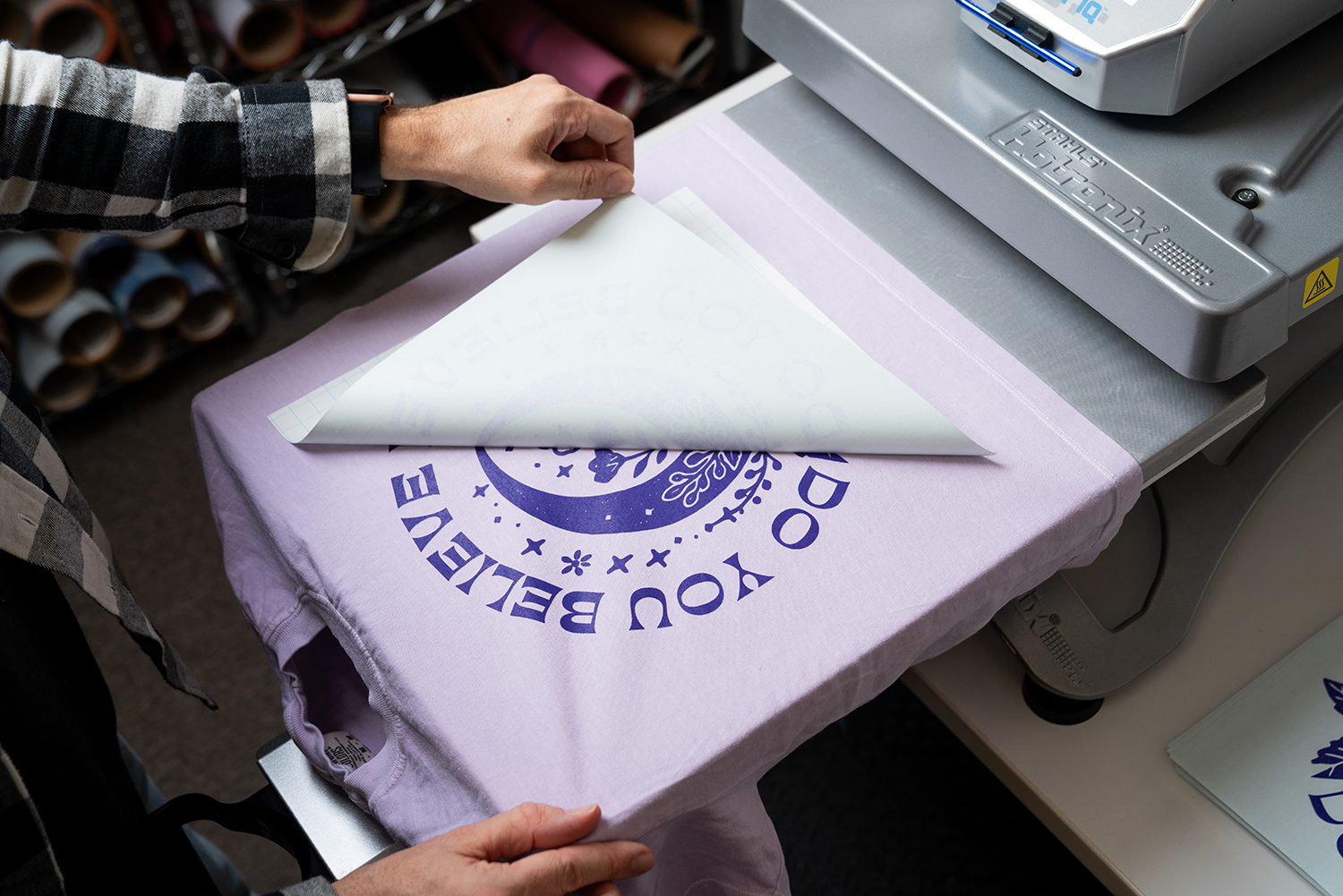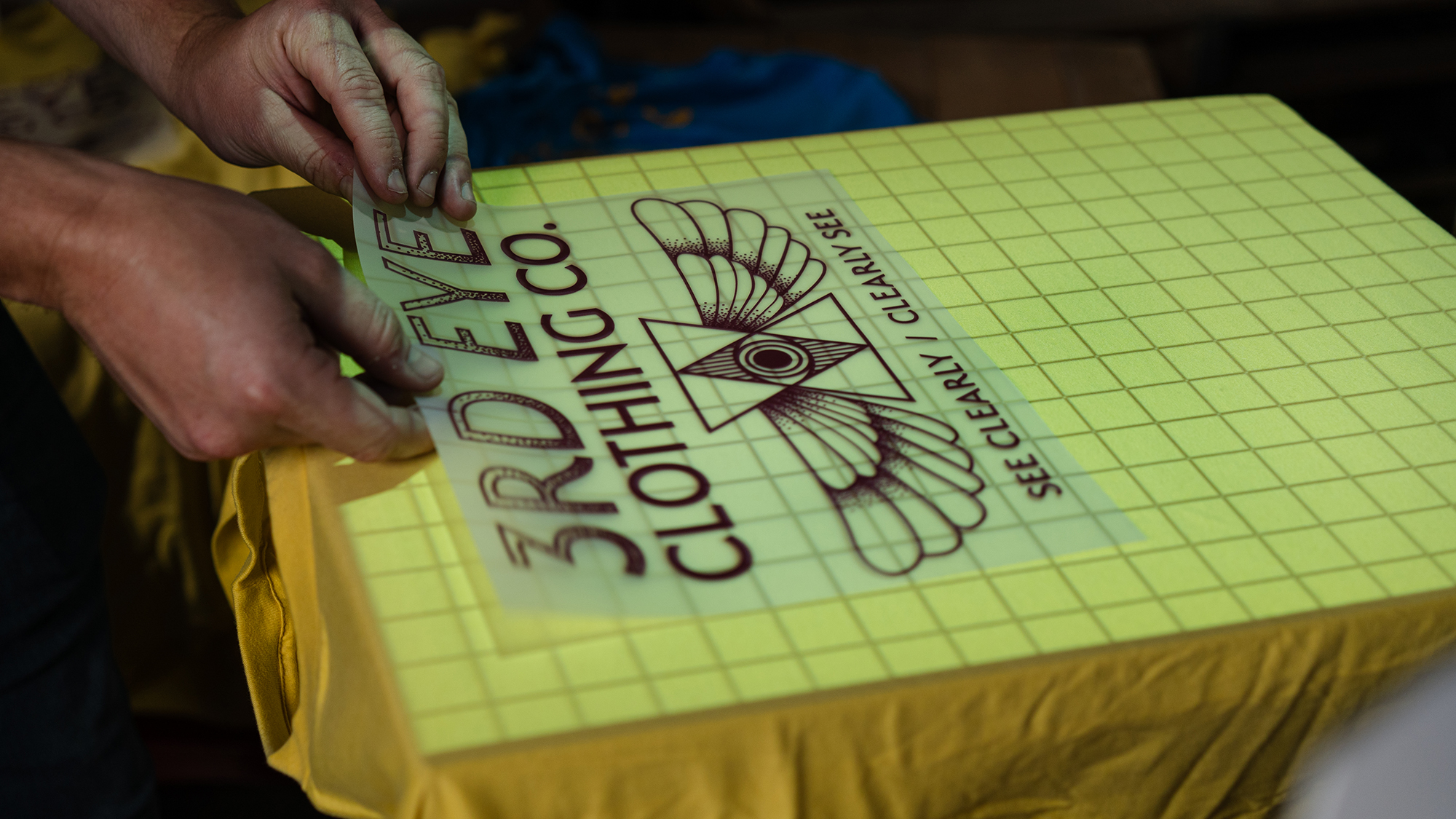The Ultimate Guide To Screen Print Transfers
The Ultimate Guide To Screen Printed Heat Transfers
If you’ve ever wondered how to create vibrant, professional-looking designs on T-shirts, hoodies, and other garments with speed and precision, screen printed heat transfers might just be the perfect solution. This powerful method combines the durability and color brilliance of traditional screen printing with the flexibility and convenience of heat press application.
Unlike direct screen printing, which requires printing directly onto the fabric, screen printed heat transfers allow you to print your designs onto a special transfer paper using plastisol inks. These transfers can then be applied to garments using a heat press, offering you more control over your production process, easier storage, and the ability to press on demand.
Whether you're a small business owner, custom apparel entrepreneur, or DIY enthusiast, this guide will walk you through everything you need to know—from choosing the right materials and artwork setup to pressing techniques and troubleshooting common issues. Whether you’re just starting or looking to level up your production process, we’ve created this comprehensive guide to help you get the most out of screen printed heat transfers and create results your customers will love.
The History of Screen Printing
Screen printing originated in ancient China during the Song Dynasty (around 960 AD) and later spread to Japan, where it was refined using silk screens and stencils. It reached Europe in the 18th century but didn’t gain popularity until the 19th century, when industrial advancements made materials like silk mesh more accessible. In the early 20th century, modern screen printing took shape with the use of photo-reactive stencils and specialised inks. The technique gained mainstream popularity in the 1960s, thanks in part to artist Andy Warhol and the booming T-shirt industry. Today, screen printing is widely used across art, fashion, and commercial manufacturing, continually evolving through innovations like heat transfers and automated presses.
The Evolution of Screen Printing
Traditional screen printing evolved into screen printed heat transfers as printers and manufacturers sought more efficient, flexible, and scalable ways to decorate garments without sacrificing quality. Due to the time-consuming setup of screen printing, the complexity of multicolour designs, and the difficulty of handling small or on-demand orders cost-effectively, printers began printing onto transfer paper rather than directly onto fabric. Using plastisol inks, they could create high-quality designs in bulk, then store them for later use. When needed, the design could be applied to garments using a heat press, offering greater flexibility, less waste, and faster turnaround.
This shift allowed businesses to streamline production, reduce errors, and offer on-demand customisation, perfect for small batches, seasonal designs, or drop-shipping models. Over time, heat transfer materials and processes improved, making screen printed transfers nearly indistinguishable from direct printing in quality and durability.
The Pros of Screen Printed Heat Transfers
Screen printed heat transfers offer several advantages that make them ideal for many apparel decorators, especially those working with small orders or custom designs. One major benefit is on-demand printing, designs can be stored and printed as needed, which is perfect for personalised or short-run jobs. They also allow for easy storage, as transfers can be printed in bulk and used months later without degradation. The process is much cleaner than traditional screen printing, requiring only a heat press at the time of application, no messy inks or screens. Additionally, they provide consistent results, since the transfer is created in a controlled setting and simply heat-applied later, reducing the chance for printing errors.
As a heat printer in the UK, you have a wide range of screen-printed heat transfer options at your disposal, designed to cater to various needs and production scales. Whether you're working with small custom orders or large volume runs, there's a solution that can meet your requirements for efficiency, quality, and flexibility.
We explore two of the highest quality offerings below, guaranteeing over 75+ washes with no cracking or fading.
1-5 Colour Screen Printed Standard
Stahls' UK Standard Screen Print Transfers offer a versatile and professional solution for apparel decoration, allowing you to order designs in up to 5 spot colours with precise Pantone colour matching to ensure brand consistency and vibrant results. Whether you're creating bold logos, detailed artwork, or branded merchandise, these transfers give you the flexibility to match your exact colour specifications. For added creativity, you can also choose from Neon and Shimmer inks at no additional cost, making it easy to add eye-catching effects and standout finishes without increasing your budget. This combination of quality, customisation, and value makes them an excellent choice for both small businesses and large-scale production.
Carrier: Opaque
Peel: Cold
InkTra Screen Printed Heat Transfers
Stahls' UK InkTra Heat Transfers represent the latest innovation in the world of screen printed heat transfers, designed to offer superior ease of use and exceptional results. These transfers come with a clear carrier sheet, allowing for precise and accurate placement on garments, ensuring that each design is applied exactly where you want it every time. The hot peel feature speeds up the printing process, as the transfer can be peeled off quickly after heat pressing, reducing downtime and improving workflow efficiency. InkTra's unique combination of high-quality materials, precision placement, and quick application makes it a game-changer for heat printers, offering enhanced productivity and a flawless finish for every job. Whether you're printing on cotton, polyester, or blends, InkTra Heat Transfers provide a smooth, durable, and vibrant result, making them a go-to choice for both small and large print runs.
Carrier: Clear
Peel: Hot



